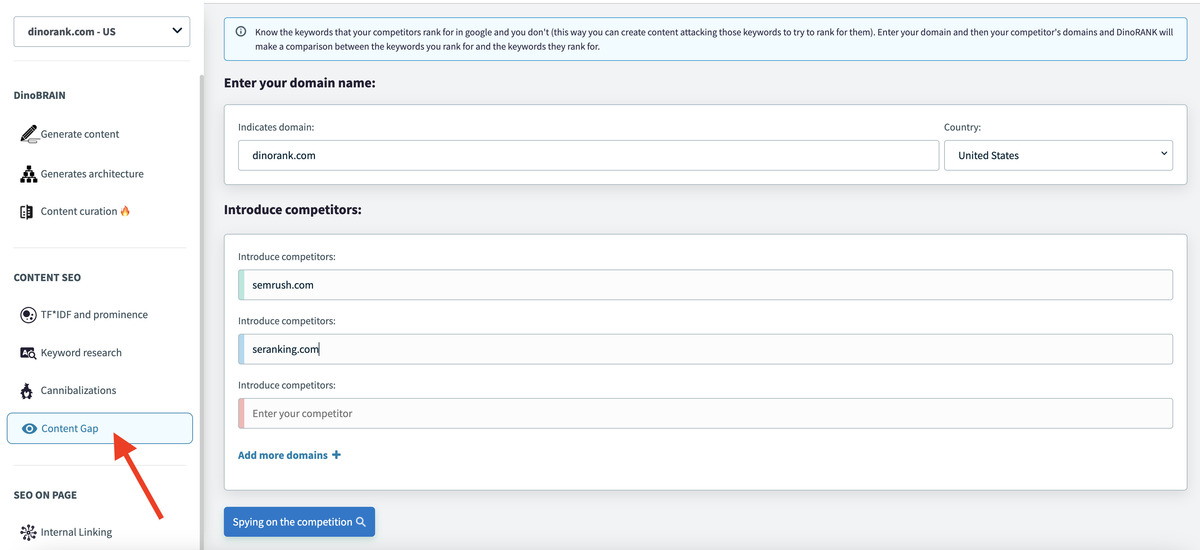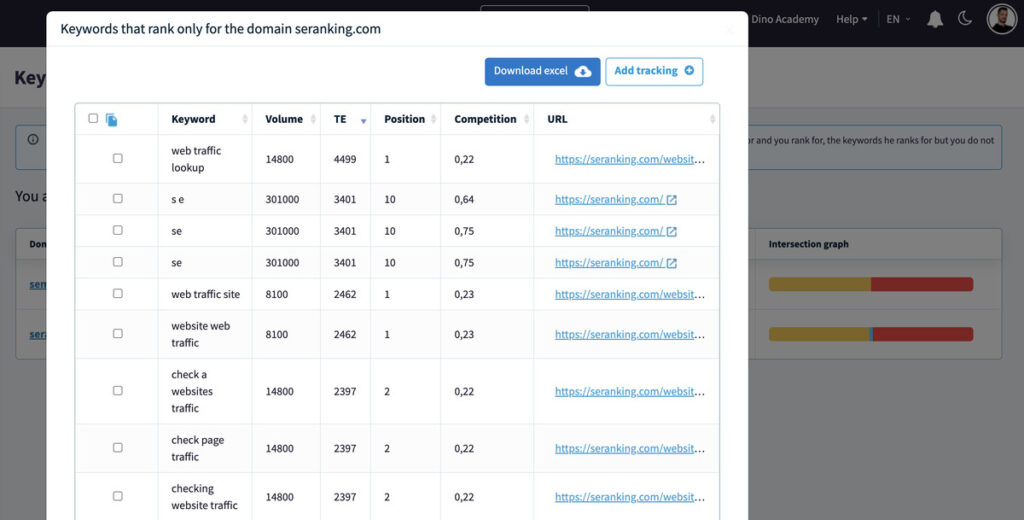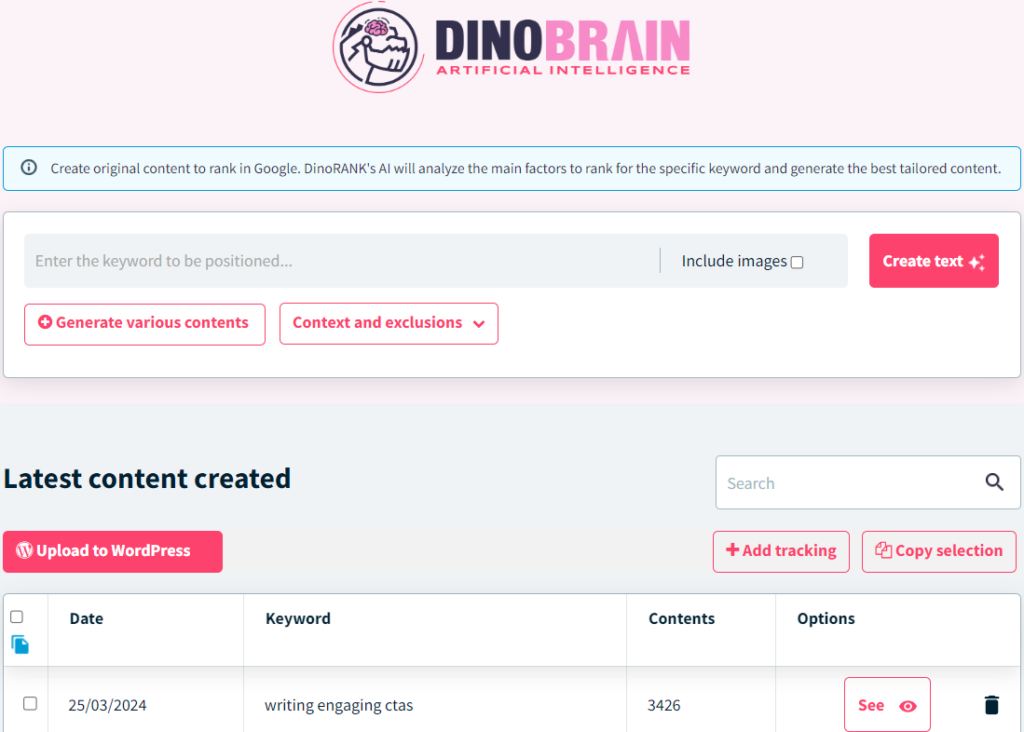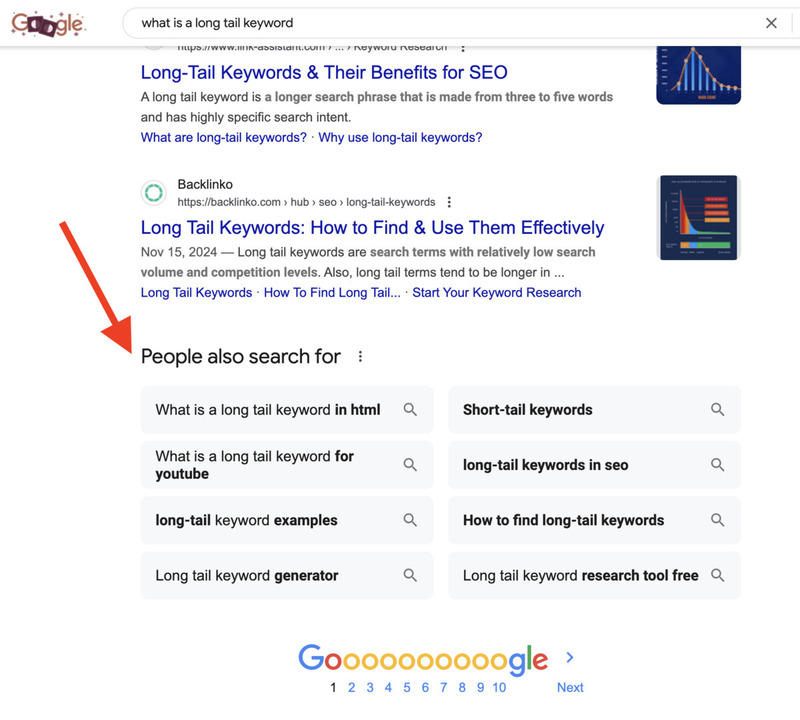Keyword research is a crucial element of digital marketing and SEO. It involves identifying and analyzing the terms that users enter into search engines, helping to create relevant content that meets their needs.
Effective keyword research can drive organic traffic to a website and improve its visibility. This process requires following a few steps and professional SEO tools to optimize content and achieve greater engagement with the target audience.
When conducting comprehensive keyword research, it is critical to analyze multiple elements that can increase the effectiveness of the strategy.
Below, you will learn what the fundamental aspects of professional keyword research are:
What a Keyword Research is?
Keyword research serves as the foundation for all SEO and content marketing efforts. It allows marketers to align their content with what users are actively searching for online. By identifying high-traffic search terms, businesses can tailor their strategies to meet user needs.
The ability to rank higher in search engines ultimately leads to increased visibility and more organic traffic.
Types of keywords
- Short-tail Keywords: these are typically one or two-word phrases with high search volume but often result in greater competition.
- Long-tail Keywords: these phrases usually consist of three or more words and target a more specific audience, making them easier to rank for.
- Local Keywords: keywords that are location-specific; they help businesses attract customers in their geographic area.
- LSI Keywords: latent semantic Indexing keywords are related terms or phrases that provide context to the main keyword.
Keyword intent
Understanding the intent behind a search query is pivotal to effective keyword research. Search intent can be categorized into several types:
- Informational Intent: Users seek information or answers to questions. Examples include “how to plant a garden.”
- Navigational Intent: Users are looking for a specific website or page, such as “Facebook login.”
- Transactional Intent: Users are ready to make a purchase or complete a transaction. For instance, “buy running shoes online.”
3 steps for an effective keyword search
These are the steps to follow to make a search focused on your main objectives:
1. Setting Clear Goals
This step is essential for any keyword research.
Objectives typically include increasing traffic, improving rankings for specific keywords and improving conversion rates.
Having well-defined objectives guides the research process and ensures that the keywords selected fit into the overall marketing strategy.
2. Brainstorming Keyword Ideas
Generating ideas for keywords can be conducted through various methods:
· Team Workshops: gather your team for brainstorming sessions to discuss potential keywords.
· Customer Feedback: listening to customer inquiries can provide valuable insights into relevant keywords.
· Researching the competition: to generate new ideas focused on your objectives, you can research what keywords your competitors are fighting for and analyze if they match your objectives.
To do this, you can use Content Gap module within DinoRANK, with which you can find out which keywords some of your competitors are ranking for (and you are not).

It will give you hundreds of ideas to work on keywords and “steal” traffic from them.


3. Refining keyword list
Once a list of potential keywords is compiled, refining it is crucial. This can include filtering out irrelevant keywords and prioritizing based on factors such as traffic volume and competition level.
It is also important to group keywords according to their search intent, as many of them may belong to the same user intent.
Tools for a professional keyword analysis
These are some of the best tools you can use to find the best keywords for your business:
Google Keyword Planner

Keyword Planner is a Google free tool offers insights into keyword volumes, competition, and cost-per-click (CPC) models, making it an essential resource for PPC and organic strategies.
If you have at least one active campaign, you can see the search volume of your keywords accurately. Otherwise, the tool will show you an approximate range.
DinoRANK

DinoRANK is an all-in-one SEO tool, in which you have a large number of modules through which you can analyze which SEO improvements are necessary in your project and also investigate what the competition is doing.
In addition, you can use its powerful AI, “DinoBRAIN”, to generate content for your blog or your product pages if you have an ecommerce.

Also, thanks to its TF*IDF module, you can analyze what terms your content needs to be semantically better than the competition.
And finally it has a Position Tracking, with which you can track the evolution of the main keywords of your business and that of your customers.
Ubersuggest

Ubersuggest is a paid tool, albeit with a limited free version, that offers keyword suggestions along with information on search volume and competition, which helps in creating content plans.
Best practices for a SEO Keyword Research
Understanding the best practices for SEO keyword research is crucial for effectively leveraging the keywords identified during the search process. This ensures a more strategic approach to keyword utilization, enhancing visibility and relevance online.
Balancing volume and competition
When selecting keywords, it’s important to strike a balance between search volume and competition.
Keywords with high search volume often have significant competition, making them harder to rank for, especially for new or smaller websites.
On the other hand, low-competition keywords may not drive substantial traffic. The key is to:
- Analyze keyword difficulty to assess how competitive a keyword is.
- Identify long-tail keywords that can yield good traffic with lower competition.
- Monitor trends and adjust the focus towards keywords that show rising interest.
Incorporating keywords naturally
Keyword placement is essential for SEO, but it should be done in a way that feels organic. Overusing keywords, known as keyword stuffing, can harm rankings and negatively affect user experience. To incorporate keywords effectively:
- Include primary keywords in the title, headers, and throughout the content without forcing them.
- Utilize variations and related phrases to enhance context and relevance.
- Maintain a natural flow in the writing, ensuring it serves the reader’s interests.
Updating and refreshing Keywords
Keyword research is not a one-time activity; it requires ongoing effort to remain effective. Regular updates are necessary to stay relevant and competitive:
- Analyze changes in search trends and user behavior over time.
- Revisit previously high-performing keywords to determine if they still bring value.
- Continuously expand the keyword list to include emerging terms in the industry.
Identifying competitors
Understanding the competitive landscape is crucial for successful keyword research. Competitors provide insights into which keywords are effective and which tactics yield results:
- Conduct competitor analysis to identify common keywords they target.
- Observe the types of content that rank well for your competitors.
- Assess competitor website authority using metrics from SEO tools.
Gaining insights
Once competitors have been identified, gaining insights from their strategies can inform one’s own keyword choices:
- Examine the structure and performance of competitor content to understand what resonates with audiences.
- Look for gaps in their keyword strategy, identifying opportunities for differentiation.
- Evaluate their backlink profiles to discover how they are driving traffic and engagement.
Monitoring Discussions
Engaging with discussions across online platforms can yield valuable information regarding relevant keywords:
- Participate in industry-related forums and social media groups to capture user language and intent.
- Monitor comment sections or threads related to popular topics within your niche.
- Use insights from these discussions to refine keyword strategies based on real user questions and concerns.
Engaging with communities
Building relationships within relevant online communities can enhance keyword research efforts by providing direct access to user interests:
Utilize community feedback to adjust keywords and content offerings accordingly.
Create value-driven content that encourages dialogue and attracts community engagement.
Regularly interact in discussions to gather firsthand knowledge about user needs and preferences.
Techniques to find relevant Keywords
Using autocomplete features
Google’s autocomplete feature can provide suggestions based on what others are searching for, offering insights into trending search terms.

Analyzing competitor keywords
Look at competitors’ websites to see what keywords they are targeting. This can reveal opportunities to capture related traffic.
Leveraging Social Media and forums
Platforms such as Reddit, Quora, and social media can be excellent sources for exploring popular search questions and trends.
Nowadays, forums are not used as much as they used to be, but what people ask there and their needs, you should take them into account.
Team workshops
Engaging team members in workshops fosters a collaborative environment where diverse perspectives can contribute to keyword idea generation.
These sessions can help in breaking down silos and ensuring that all relevant voices are heard.
- Encourage cross-departmental participation to gather various insights.
- Use brainstorming techniques such as mind mapping or word association.
- Document all ideas and categorize them for further analysis.
Using structured formats
To maximize the effectiveness of team workshops, adopting structured formats can make discussions more focused.
Set clear agendas, assign roles, and utilize tools such as whiteboards or digital platforms to visualize ideas.
Customer feedback
Customer feedback is invaluable for understanding the language and terms potential users employ.
Gathering this information can significantly enhance keyword selection and prioritize relevance over assumptions.
- Conduct surveys or interviews to solicit direct input from customers.
- Analyze existing customer inquiries through support channels or forums.
- Utilize tools such as feedback forms to collect insights on what customers are searching for.
Incorporating real user language
By incorporating the actual language used by customers into keyword lists, brands can better align their content to meet search intent.
This connection enhances engagement and increases the likelihood of conversion.
Filtering by relevance
Once a broad list of keywords has been gathered, refining them based on relevance is crucial.
The goal is to ensure that selected keywords accurately represent the content and services offered.
- Assess how well each keyword aligns with the main objectives of the content.
- Consider seasonal trends and topics that may influence relevance.
- Eliminate terms that do not directly relate to target audience interests.
Using traffic data for filtering
Utilizing traffic data from various analytical tools can aid in filtering keywords effectively.
Keywords that demonstrate high interest and engagement should be prioritized in the selection process.
Prioritizing by volume
While relevance is important, considering the search volume associated with keywords can guide strategic decisions.
High-volume keywords indicate significant interest and potential traffic.
- Identify keywords that have a good balance of volume and competition.
- Be cautious of overly competitive keywords and consider long-tail variations.
- Regularly update keyword lists to reflect changes in search trends and consumer behavior.
Dynamic Adjustments
As keyword interests and industry trends evolve, keeping a dynamic approach to prioritization is essential. Regularly revisit keyword performance to ensure continued effectiveness in driving traffic and engagement.

